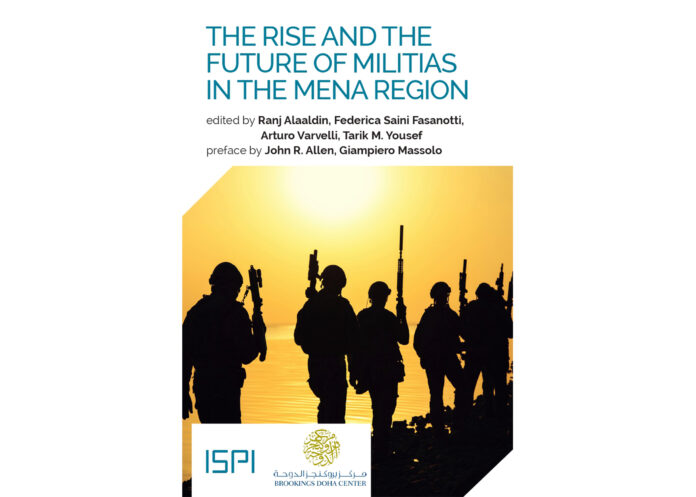Authors: Ranj Alaaldin, Federica Saini Fasanotti, Arturo Varvelli, Tarik M. Yousef
Organization/Publisher: ISPI-Brookings Doha Center
Affiliation: ISPI-Brookings Doha Center
Date/Place: November 2019/ Doha, Qatar
Type of Literature: Report
Number of Pages: 129
Link:https://www.ispionline.it/it/pubblicazione/rise-and-future-militias-mena-region-24466
Keywords: Militias, Human Security, Non-State Actors
Brief:
This report discusses the evolution of militias in the Middle East and North Africa (MENA) region since 1994. The non-State militant organizations sustain their sphere of influence and expand not only because of massive weaponry and financial support from their external clients but also due to the existing socio-economic or political fault lines in respective regions. The suitable conditions for a militant organization have been analyzed in this report by evaluating several case studies like Hezbollah in Lebanon, Iraqi Militias, Hamas in Gaza Strip and militant tribes of Yemen. Enabling conditions include failure of a State to provide its citizens necessities, i.e. health, education and employment. Militant organizations by exploiting these socio-economic voids strengthen themselves enough to become alternatives to a legitimate State. This report also elaborated the phenomenon of warlords specifically in Libya and the nature of their militias. Because of foreign vested interests, the international community negotiates and deals with them by giving them de-facto recognition. Moreover, the citizens suffering from economic deprivation and lack of support from the State took arms and joined these militias out of desperation. The stabilization of these regions is inevitable but impossible without deep socio-economic and political reforms. Without a strong infrastructure, elimination of these militias and rehabilitation of destabilized regions is not achievable.
By: Muhammad Taimoor Bin Tanveer, CIGA Research Associate




